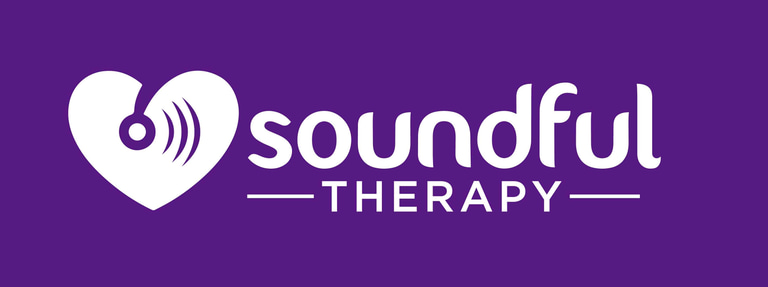Music and Medicine
MUSIC THERAPY: THE BRAIN AND BODY
Several chemicals and neurotransmitters in the brain are associated with feelings of joy, happiness, and well-being, and music therapy can indeed influence their release. Some of the key neurotransmitters and hormones involved include:
1. Dopamine: Often referred to as the "feel-good" neurotransmitter, dopamine plays a crucial role in the brain's reward system. Listening to music, especially music that one enjoys, can trigger the release of dopamine, leading to feelings of pleasure and happiness.
2. Serotonin: Serotonin is known as the "happiness hormone" and is involved in regulating mood, emotions, and social behavior. Music therapy is known to increase serotonin levels, contributing to improved mood and reduced feelings of depression.
3. Endorphins: Endorphins are natural painkillers produced by the brain, and they are also associated with feelings of euphoria and well-being. Engaging in music therapy activities, such as singing or playing musical instruments, can stimulate the release of endorphins, leading to a sense of happiness and relaxation.
4. Oxytocin: Often called the "love hormone" or "bonding hormone," oxytocin is released during social bonding activities and is associated with feelings of trust, empathy, and connection. Music therapy, particularly group music-making activities, can promote the release of oxytocin, fostering a sense of emotional connection and well-being among participants.
Music therapy has been widely studied for its therapeutic effects on mental health, including its ability to alleviate symptoms of depression and anxiety and enhance overall well-being. Research has shown that listening to music, engaging in musical activities, and participating in music therapy sessions can:
- Reduce stress and anxiety levels
- Improve mood and emotional regulation
- Increase feelings of relaxation and calmness
- Enhance self-expression and creativity
- Foster social interaction and communication
- Provide a sense of purpose and meaning
IMPROVING THE PHYISCIAL ATTRITBUTES AND DESEASE PREVENTION:
While music therapy is primarily known for its psychological and emotional benefits, it can also have positive effects on physical health and healing, including the healing of flesh and overall health improvement.
In the below bullet points, physical healing and improvement is contributed to actual movement such as dancing, running to a beat, or timing a stretch during rehabilitation. Others are improvements by simply lowering stress levels.
Here's how music therapy can contribute to physical healing and well-being:
1. Pain Management: Listening to music has been shown to reduce perceived pain levels and improve pain tolerance. This effect is attributed to the release of endorphins, the brain's natural painkillers, in response to music. By reducing pain perception, music therapy can contribute to overall comfort and well-being during the healing process.
2. Stress Reduction: Stress and anxiety can impede the body's natural healing processes and exacerbate physical symptoms. Music therapy has a calming effect on the nervous system, promoting relaxation and reducing stress levels. Lowering stress can support the body's immune function and enhance its ability to heal wounds and injuries.
3. Immune System Boost: Research suggests that listening to music can stimulate the production of immune-boosting cells, such as natural killer cells and lymphocytes. A robust immune system is essential for fighting off infections and promoting faster recovery from illnesses and injuries.
4. Heart Health: Music therapy has been linked to improvements in cardiovascular health, including lower blood pressure, reduced heart rate, and improved circulation. Enhanced heart health contributes to better overall physical well-being and can support the body's healing processes. Also promotes absorption of nutrients and medication.
5. Respiratory Function: Music therapy, particularly techniques such as rhythmic breathing exercises accompanied by music, can help improve respiratory function. Deep breathing to the rhythm of music can strengthen respiratory muscles, increase lung capacity, and enhance oxygenation of tissues, supporting healing and overall health.
6. Movement and Rehabilitation: Music therapy can facilitate movement and physical rehabilitation in individuals recovering from injuries or surgeries. Rhythmic auditory stimulation provided by music can help synchronize movements, improve coordination, and enhance motor skills, making rehabilitation exercises more effective and enjoyable.
7. Enhanced Sleep Quality: Adequate sleep is essential for the body's healing and recovery processes. Music therapy has been shown to promote relaxation and improve sleep quality, making it easier for individuals to get the rest they need for optimal healing and well-being.
8. Emotional Support: Music therapy can provide emotional support and alleviate feelings of distress or isolation often experienced during the healing process. By promoting relaxation, reducing anxiety, and fostering positive emotions, music therapy contributes to a supportive healing environment conducive to physical recovery.
Incorporating music therapy into comprehensive healthcare plans can offer holistic support for individuals undergoing medical treatment, surgery, or rehabilitation. By addressing both the physical and emotional aspects of healing, music therapy can enhance overall well-being and improve health outcomes.
While music therapy alone may not be a substitute for other forms of treatment for clinical depression or other mental health conditions, it can be a valuable adjunctive therapy that complements traditional interventions such as medication and psychotherapy. It's essential to work with trained music therapists and healthcare professionals to develop personalized treatment plans tailored to individual needs and goals.











OUTLINE:
Naturalistic environments have been demonstrated to promote relaxation and wellbeing. We assess opposing theoretical accounts for these effects through investigation of autonomic arousal and alterations of activation and functional connectivity within the default mode network (DMN) of the brain while participants listened to sounds from artificial and natural environments. We found no evidence for increased DMN activity in the naturalistic compared to artificial or control condition, however, seed based functional connectivity showed a shift from anterior to posterior midline functional coupling in the naturalistic condition. These changes were accompanied by an increase in peak high frequency heart rate variability, indicating an increase in parasympathetic activity in the naturalistic condition in line with the Stress Recovery Theory of nature exposure. Changes in heart rate and the peak high frequency were correlated with baseline functional connectivity within the DMN and baseline parasympathetic tone respectively, highlighting the importance of individual neural and autonomic differences in the response to nature exposure. Our findings may help explain reported health benefits of exposure to natural environments, through identification of alterations to autonomic activity and functional coupling within the DMN when listening to naturalistic sounds.
Cassandra D. Gould van Praag1,2, Sarah N.Garfinkel1,2, Oliver Sparasci3, Alex Mees3, Andrew O. Philippides4, MarkWare3,5, CristinaOttaviani6 & Hugo D. Critchley1,2
You didn’t come this far to stop.
Mind-wandering and alterations to default mode network connectivity when listening to naturalistic versus artificial sounds
Music and Alzheimer's
Discover how music helps with memory, mood, and happiness.


Write EEG Analysis of the Contribution of Music Therapy and
Virtual Reality to the Improvement of Cognition in Alzheimer’s Disease;
CONCLUSIVE REMARKS Section 8:
8. CONCLUDING REMARKS
The aim of this paper was to introduce and support a theory by which music can enhance cognitive functions in Alzheimer’s disease. We propose that the pleasurable experience of music is directly tied to the activation of the brain reward system; a network of interconnected brain structures was involved in dopaminergic activity and in turn the rewarding and motivational experience. The activation of these pathways leads to increased release of dopamine and therefore the subjective experience of pleasure in the listener’s brain. This uplift in emotional state can be linked with better cognitive performances, as suggested by various studies in the fields of neuroscience and computer science’s intelligent tutoring systems. We explore this theory through a study we conducted on people suffering from subjective cognitive decline. Results show that following the music therapy session, participants had increased positive emotions, reduced negative emotions, slightly increased attention performance and increased memory performance. Supporting our theory, we propose that the cognitive performance increase is a result of a better cognitive environment generated by the music. We propose that by activating the reward system—increasing the dopaminergic release—and in turn generating positive emotions, music can positively affect memory and other cognitive functions.
DOWNLOAD FULL PAPER HERE:
Thinking Issues
Organizations use terms like "thinking issues" for Alzheimer's/dementia to make it less stigmatizing, more relatable by focusing on common experiences (memory, logic), encouraging earlier self-reporting and detection, and shifting from a purely medical label to describing actual functional impacts, promoting understanding and proactive care rather than fear. It highlights that these are brain disorders affecting core abilities like memory, reasoning, and daily tasks, not just "old age" problems, aiming to normalize seeking help.
Key Reasons for "Thinking Issues" Language:
Reduces Stigma: "Dementia" and "Alzheimer's" can sound frightening or isolating; "thinking/memory problems" is a gentler, more inclusive phrase.
Promotes Early Detection: Framing it as "thinking issues" encourages people (and their families) to talk about subtle changes in memory or focus, leading to earlier medical assessment.
Highlights Core Symptoms: It directly points to the key symptoms—problems with memory, reasoning, concentration, and decision-making—making the condition more understandable.
Focuses on Function: It emphasizes the impact on daily life (like difficulty with tasks, conversations, or safety) rather than just a diagnosis, which helps people grasp the severity.
Encourages Proactive Steps: By normalizing the conversation, it motivates individuals to get checked, as some underlying causes of cognitive decline are treatable.
Broadens Understanding: It moves beyond just "memory loss" to encompass language, planning, and judgment, reflecting the full spectrum of cognitive decline, say the Alzheimer's Association.
In essence, it's a strategy to destigmatize a serious brain disease and make people more comfortable seeking diagnosis and support by describing the everyday challenges they face.


